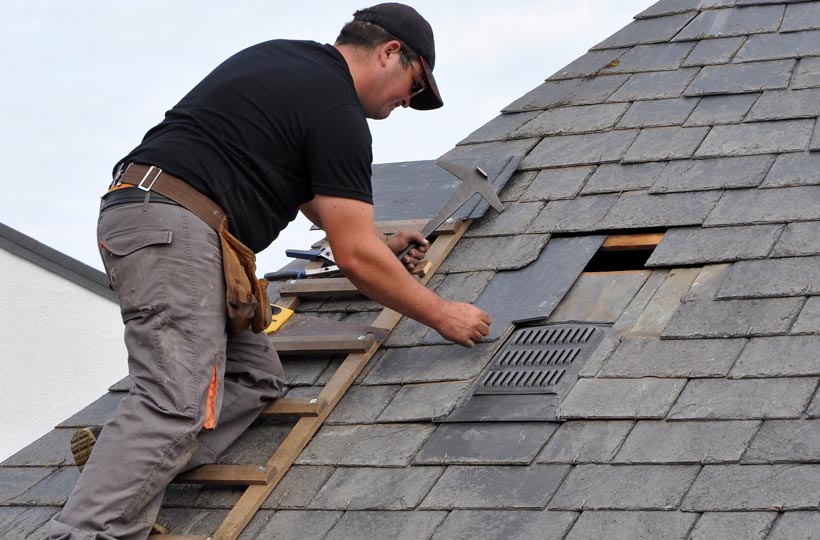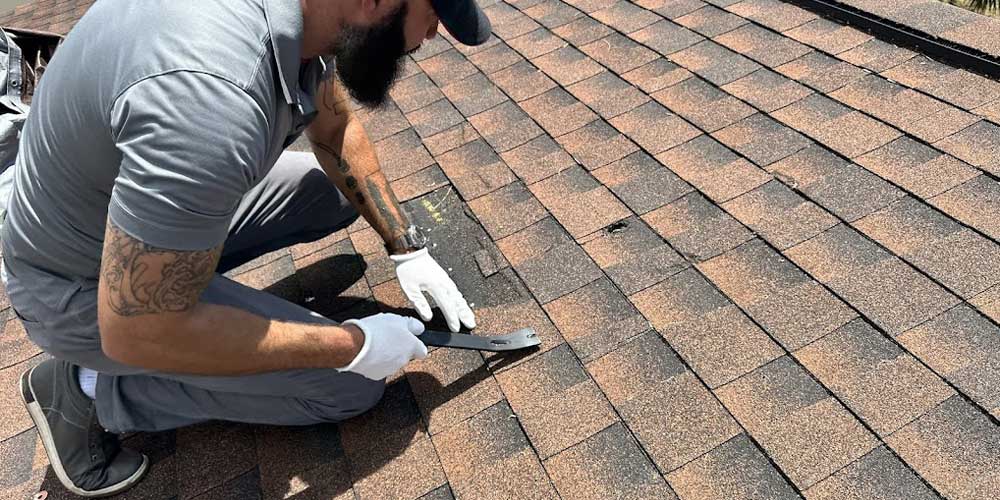Roof Repair Oahu: Expert Roof Fixes for Lasting Defense
Roof Repair Oahu: Expert Roof Fixes for Lasting Defense
Blog Article
Comprehending the Various Types of Roofs: A Comprehensive Overview for Homeowners
With a selection of alternatives-- ranging from the typical gable to the contemporary flat-- each type presents unique benefits and challenges that should straighten with the home owner's particular requirements and environmental factors to consider. As we discover the details of numerous roofing system types, it comes to be apparent that one size does not fit all; the best selection might surprise you.
Gable Roof Coverings
Saddleback roofs, identified by their triangular form, are among one of the most prominent roofing styles because of their simplicity and effectiveness in losing water and snow. This design includes 2 sloping sides that fulfill at a ridge, enabling effective drain and lessening the danger of water accumulation. The high pitch commonly associated with saddleback roofs enhances their ability to deal with hefty precipitation, making them ideal for different environments.
In enhancement to their functional advantages, saddleback roofs offer visual convenience. They can be adapted to different architectural designs, from traditional to contemporary homes. The design can also suit additional functions such as dormer home windows, which improve natural light and ventilation in the attic room space.
Furthermore, saddleback roofs give ample space for insulation, adding to power performance. House owners can pick from a range of roof materials, consisting of asphalt shingles, metal, and ceramic tiles, additionally boosting customization alternatives.
Despite their advantages, saddleback roofs may call for added assistance in locations prone to high winds or heavy snowfall. In general, the gable roofing system remains a preferred choice as a result of its mix of functionality, longevity, and aesthetic charm.
Apartment Roofs
Flat roofs are typically identified for their minimal layout and functional applications, especially in industrial and industrial settings (oahu roofing). These roof coverings feature a straight or virtually horizontal surface area, which enables simple building and versatile space application. While they may lack the aesthetic appeal of pitched roofs, flat roofings provide various benefits, particularly in urban environments where optimizing space is crucial
One of the primary benefits of level roof coverings is their ease of access. Property owners can use the roof covering area for different purposes, such as rooftop gardens, terraces, or solar panel setups. Additionally, level roofing systems are typically extra cost-effective to preserve and set up contrasted to their sloped equivalents, as they require fewer materials and labor.
However, flat roofs do existing certain difficulties. Proper drainage is necessary to avoid water pooling, which can bring about leaks and architectural damage. Thus, choosing high-quality waterproofing materials and normal evaluations are vital for ensuring durability. Usual products used for flat roof coverings include built-up roofing (BUR), changed asphalt, and single-ply membranes, each offering distinctive benefits. Generally, level roof coverings function as a versatile and useful selection for several homeowners and organizations alike.
Hip Roofing Systems
Hip roof coverings are characterized by their sloped sides that assemble on top, creating a ridge. This style is unique from gable roofings, as all 4 sides of a hip roof covering incline downwards toward the wall surfaces, giving an extra secure structure. The angle of the inclines can differ, enabling for adaptability in building aesthetic appeals and performance.
One of the primary advantages of hip roof coverings is their ability to stand up to heavy winds and negative climate condition. The sloped surface areas enable far better water drain, reducing the danger of leaks and water damage. Additionally, hip roofs provide enhanced attic room area, which can be made use of for storage space or perhaps converted into habitable locations.
Nevertheless, constructing a hip roof can be a lot more intricate and costly than simpler roofing system types, such as saddleback roofs. The extra material and labor involved in producing the slopes and guaranteeing proper architectural stability can cause higher expenses. Regardless of these downsides, many property owners prefer hip roofings for their resilience, visual allure, and capacity for energy effectiveness.
Mansard Roof Coverings
Mansard roofing systems, frequently identified by their unique four-sided design, attribute two slopes on each side, with the reduced a fantastic read incline being steeper than the upper. This building style, originating from France in the 17th century, is not just aesthetically appealing however useful, as it optimizes the functional room in the upper floors of a building. The steep reduced slope get more permits even more headroom, making it an excellent option for loft spaces or attic rooms, which can be transformed into living spaces.
Mansard roofings are defined by their versatility, accommodating different building styles, from traditional to modern. They can be constructed with different materials, consisting of asphalt tiles, slate, or metal, offering house owners with a variety of options to suit their preferences and spending plans. In addition, the design permits for the combination of dormer home windows, improving all-natural light and ventilation in the top levels.
Nonetheless, it is essential to consider the potential downsides. Mansard roof coverings might need more maintenance as a result of the intricacy of their style, and their steep inclines can be testing for snow and rainfall runoff. Overall, mansard roofs incorporate sophistication with functionality, making them a popular choice amongst house owners seeking distinctive building attributes.
Dropped Roofs
As home owners significantly seek simpleness and performance in their architectural layouts, dropped roofs have actually emerged as a preferred option. Characterized by a solitary sloping plane, a shed roofing provides a minimalist visual that complements various home styles, from modern to rustic.
Among the primary benefits of a shed roof is its simple construction, which commonly converts to lower labor and product prices. This design enables for reliable water drainage, decreasing the threat of leakages and water damage. Additionally, the vertical incline gives sufficient area for skylights, boosting all-natural light within look at this website the interior.
Shed roofings additionally offer flexibility in terms of usage. They can be successfully incorporated into additions, garages, or outdoor structures like sheds and pavilions. Moreover, this roof covering design can accommodate various roofing materials, including metal, asphalt roof shingles, or perhaps eco-friendly roofings, straightening with environmentally friendly efforts.
Nevertheless, it is important to take into consideration local environment conditions, as heavy snow loads may necessitate adjustments to the roof's angle or framework. On the whole, lost roof coverings offer a functional and visually pleasing choice for property owners wanting to optimize performance without jeopardizing style.
Conclusion


Gable roofs, defined by their triangular form, are among the most prominent roof covering styles due to their simpleness and effectiveness in dropping water and snow. oahu roofing. The high pitch typically associated with gable roofings enhances their capability to take care of heavy rainfall, making them ideal for various environments
While they might lack the visual allure of pitched roofs, level roofs supply various benefits, particularly in city environments where making the most of room is crucial.

Report this page